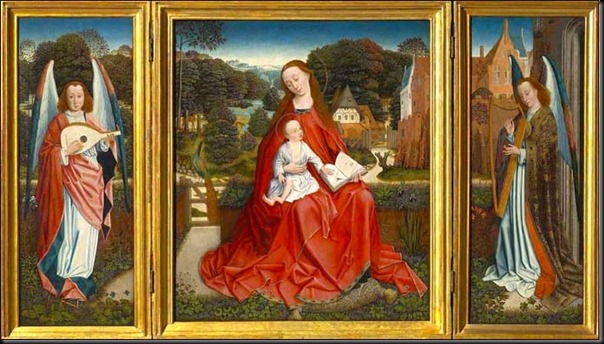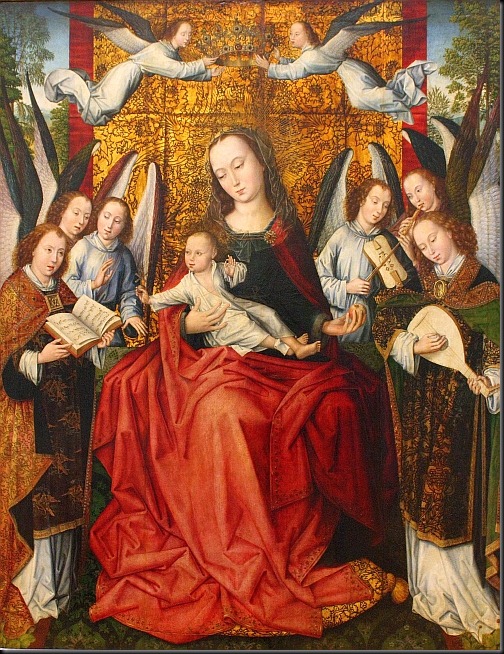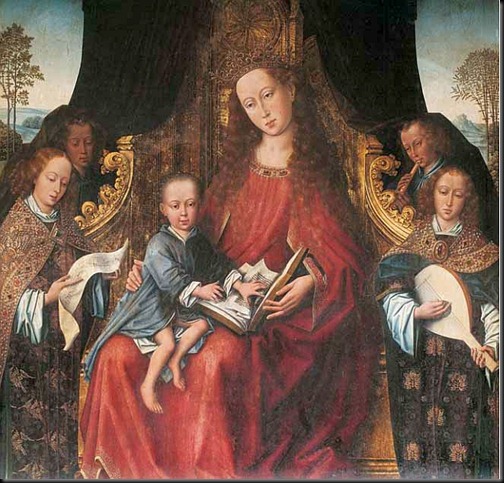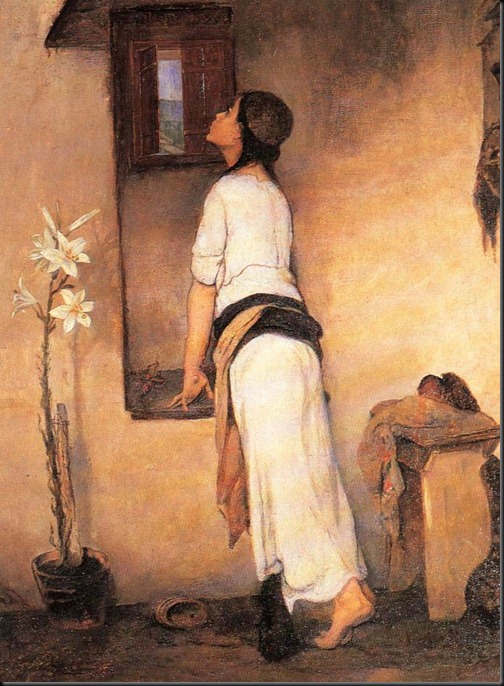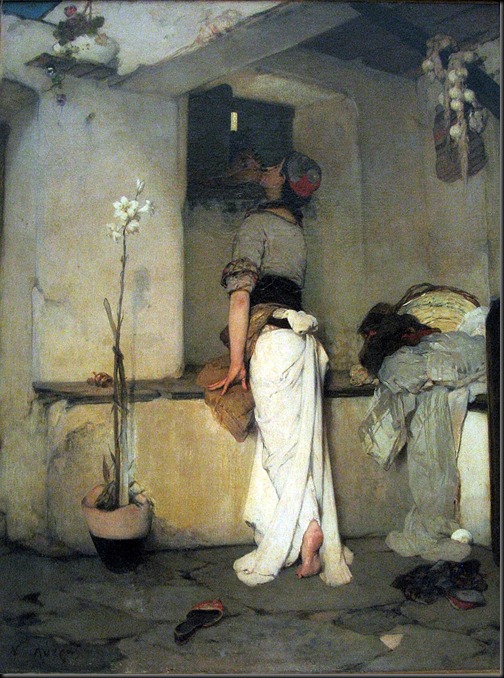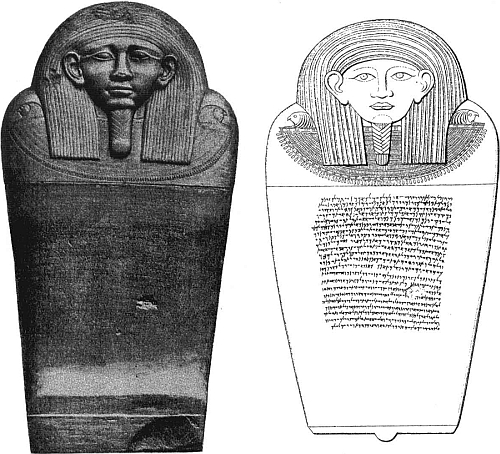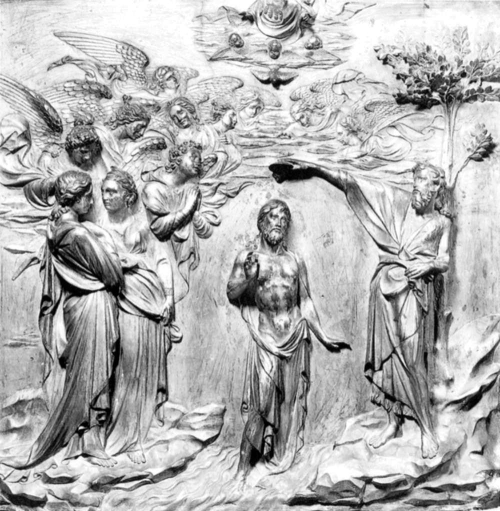Saturday, May 28, 2011
Outlook Error Sending
Friday, May 27, 2011
How Long Does An Icecube Take To Freeze
title character of today's entry is not his name. Flemish painter, working in Brussels at the end of the fifteenth century, evidently referring to the artistic conventions developed by Rogier van der Weyden - enough is known about him ... But where did the idea to write about him? As you know, students love to do a variety of charts. PhD students among the most beautiful walking sticks, counting how much time a professor during the lecture says, "truism is ..." or other such tables, and carefully created wykresiki statistics, arousing a smile on the faces of successive cohorts. Similar entertainment are also students of art history, because how many ranking of the best you can do neckerchiefs some lecturers. During one of the tours after a certain amount of alcoholic drinks to evaluate an idea who the artist was the funniest nickname. He won the champion today featured embroidered foliage. So let's draw a bit more of his mysterious character.
Pictured next to the altar, depicting the Madonna with Child and angels muzykującymi located in the Museum of Fine Arts in Lille. This is one of the best works of the Master, but not famous. So let's start with the fact that Master embroidered foliage is not the only inhabitants of the Netherlands and the Flemish, who received an unusual nickname from art historians. Women's Champion Półfigur little work we can even see the National Museum in Poznan ("Lady in Toscana"), and Jan van Stoevere increasingly identified with a certain Master of the Madonna on the grass. Adding to the equally exotic names such as Champion Hortus conclusus (probably Willer van Tanger), Manny Rain Master, Master of The Holy Blood and the separation over the past decades, the Master of the Master of Flemalle Flemalle - hand I and Master of Flemalle - Second hand (it sounds at least funny ...), with You can easily see that the Netherlands employed many talented artists whose personal details have been blurred, however.
reasons of creating such complex names, be sought in the subject of their paintings. Usually, if other regions are not created such unusual nicknames, but the thematic unity Dutch paintings is very difficult. Because how much it might be the Champions Legends of Mary Magdalene? (And there was such an anonymous artist working in Malines). Another Madonna and the holy cause, that they should focus more on the style of these works, odmiennościach formal, not the content of paintings. This is the way managed to set the working poor. Dutch primitives, and so acting mainly in the second Call. Painters of the fifteenth century, where you could assign them to specific images, but it was impossible to find them bibliographic data.
6 years ago when the museum in Lille, organized the first exhibition devoted to the history of the only Master embroidered foliage, hardly anyone expected that this will develop knowledge about it, and artists like him. So far, the problem was mainly scattered works and how they compare to state with probability close to certainty, that actually came from the hand and brush of the Master. This is the way to next flagship works of other French cities such as Amiens, or across the ocean (Philadelphia) analyzed the work of Mexico City and the famous altar of Polizzi Generosa, Sicily.
presented next to the altar, situated in the collections of the Louvre, also is tied to the Master embroidered leaves. This time also we are dealing with a similar theme, but otherwise solved. Angels concentrated in the main field imaging, and their number causes visual clutter, the emphasis on the figure of Mary. Child, however, seem clearly interested in these creatures, one reaches his hand toward as if you wanted to play with him. According to many researchers Champion embroidered foliage focused primarily on the specific background of each style, especially the crown. Landscape, therefore he was in his role, which also fits in the complex development of this subject was in the fifteenth century. Many paintings in fact can be explained as a kind of summy nature - appeared next to each other rare animals, high cliffs almost sprang from the banks of rivers and seas, and cities and agricultural work as a complemented farthest plan.
look again at the first painting (from Lille). Show the same way Madonna is not particularly creative and fold clothes similar find in other great artists of this period, such as Martin Schongauer whether that Rogier van der Weyden. In the second or the Child does not focus on skonwencjonalizowanej pose, emphasizing its historical role. For example, in Madonna Duran from around 1440, hanging in the Prado of Madrid, presented the Child as Rogier card reading books,-held by Our Lady ( link ). This idea clearly seems to be very creative and in many paintings Netherlands from the fifteenth century we find similar behavior, being able to easily trace the evolution of these performances.
What, however, in the case of the Master embroidered foliage seems to be the most important is the emphasis on outstanding ornamentyzację work. Many works of the late Middle Ages and early Renaissance Transalpine has the features by emphasizing the details of a number of religious symbolism and complicated meanings. It is through these works iconology originated, allowing for an understanding of how trivial it might seem parts of the world could be understood as referring to the history of salvation. For example, stressed the lily purity and innocence of Mary, because in the "Song of Songs" (Song 2.1 and 7.3), the author of the bride compared to the plant, and the violet was a symbol of humility. This time the union was still further, because the red color in the middle of the flower was treated as a reference to the prophecy of Simeon, from the Gospel. Luke (Lk 2:35: "a sword will pierce your soul"). This understanding of the world presented can be found in many paintings created in Europe, especially in the Netherlands in the fifteenth century
therefore looking at the work of the Master Embroidered leaves on two representative works for him, we are not able to see these flowers or at all for such an understanding of nature. In return, the recipient before the eyes appears to be intricately painted with the gigantic nature of the detail and often painted each leaf individually. In painting it is manifested very clearly one of the phases of the evolution of landscape painting in the fifteenth century in Flanders and Brussels area developed since then a new way to link the artistic achievements of the international Gothic style and the nascent naturalism. Sacred Space, hitherto almost completely subordinated to the theme of the stage and the main group compositional, "breaks away" from those kind of characters and begins to live his own life. " Even in such a schematic picture of how Paris, the grass and the trees merge imperceptibly with green cloth situated next to the throne.
Master Tech embroidered foliage is perhaps most noticeable in the altar located in Polizzi Generosa, the small, four-thousandth of a village near Palermo, famous for the more that is born there, Martin Scorsese and Domenico Dolce. But it is worth visiting a local church, not only to participate in the annual procession in honor of St.. Gandolfo Sacchiego, but also look at the Madonna and Child of this Master. Readers who are interested in a few lines above the image link to the Madrid Rogier van der Weyden, no need to argue that painting from Sicily is a copy of their processed. A similar solution with child viewers of the book (the work looks to me personally at least once painted over at a later stage) was complemented by figures of angels, closely adjacent to the beautifully decorated throne, Mary. Connected so the idea of \u200b\u200baround 1440, with the one who applied the Master himself in the Parisian image. Similarly, therefore, placed the tree in the background, which on the one hand, duplicate the borders of the picture, on the other, direct the viewer's attention toward the corners, paintings, giving the illusion of natural, not a fairy-fantastic space.
joke would be calling the Master of embroidered foliage Seurat predecessor, but a close look at his work indicates that many plants and leaves are created with tiny dots instead of the obvious brush strokes. It is a pity, therefore, that the artist was not associated with any name, because maybe it would be fascinating to trace his biography and find the reasons for this unusual technique. For these reasons, the study now turn to the reconstruction of late medieval artists' studios, the relationship between the master and the assistants (the hero of today's post probably also painted landscape backgrounds for other painters in Brussels). Hence, a little sad that with an expression of the soul and hands of the artist, we can not even explain the obvious about him, as the dates of life, creation, art education, or just personal details. For though art history is not always necessary for happiness (and sometimes complicated by the potential interpretations) sometimes it is worth to give a human face to the scientific findings.
Can I Get A Tan In Hawaii In February
Jennifer Aniston Tickled
All mothers Happy birthday to celebrate yesterday's holiday: *
My mother will get (today) from me a complete lot. A little old-fashioned, large tablecloth and six small, in a color that matches her living room.
Do not bother due to accounting errors Tourneo and the counting of the boxes .. This is my first steak in my life and self-mastery bars patent it was SOMETHING. In addition, the model itself invented, using a rose on some bordiurze of books and different patterns of network ... I tried as I could:)





In addition, since the fall of Mother's Day or my birthday Ewelina, suffered to work pig birthday cake: D Ewelina of us in the office of three, so an opportunity was concrete. Unfortunately, chocolate cake with coffee, usually reliable, but this time failed, and the pigs were cute zakalco-gniot. Thus, the provision will not, enjoy the mumps from glucose and strawberry jelly, because it took a wise Elianka for not having the weight of sugar or powdered sugar, or gelatin ....

Ps. HERE original pig cake
PS2. Taken as usual to scribble. The divine is not it?
Wednesday, May 25, 2011
Retaining Walls Per Square Feet
Bunco Gifts February Ideas
Who does not like kisses? I personally love (like nailing żółwików), provided of course that they do not try to kiss me on the lips of some other men. But of course, women are confronted sweetness of lips do not refuse ;-) But seriously, it is time to take up an interesting picture, about which I write a post quite a few months ago. How do I blurted out in the entry to the wishes of Easter ( link ) my friend Nina is a material suitable form a fascinating subject, which is to change the way the art of portraying kisses. Thus, under her influence, I decided earlier this year to write a few words about my opinion, the most wonderful kiss in the painting I have ever seen. And actually two closely related pictures - "Pending" and "Kiss," the nineteenth-century Greek painter, Nikiforasa Lytrasa.
Let us therefore begin with the first of these outstanding paintings of one of the greatest artists in the history of independent Greece. First, some biography, because I realize that probably most readers see the name Lytrasa the first time in my life. A pity, because he / she is in Greek art history books from a similar role as Delacroix Grottger in France or in Poland. Thus embodies the best characteristics of a fairly good idea of \u200b\u200bromantic connections workshop with academic education. But the thing ...
Nikiforos Lytras was born in 1832 in Pyrgos on the island of Tinos. The small Cycladic island since 1821 was part of Greece, and for nine years before the painter's birthday, there was found miraculous icon of Our Lady, which was attributed to St. Luke (as, incidentally, in the case of many others and up is hard when you have time to write down the Evangelist gospel and heal people.) Nikiforos came from an artistic family, because his father (Anthony) was a famous sculptor, executing multiple objects in marble for the surrounding towns and islands. So when I saw her son's art jam quickly sent him to the Athens Academy of Fine Arts, where he visited the boy at the age of eighteen years. On the talent to get to know pretty quickly, its protective wings of that time took it to the best professors, and returned the favor in the young Nikiforos under two years of first prize in the contest for the biblical picture, and before he graduated as an assistant professor. Thanks to his principal teacher, got the work orders in the Russian church Soteiras Lykodimou in Athens. As if that and a trip to the famous academy in Munich was not enough, he exhibited his works at the World Exhibition in Paris in 1855 (and several more).
Such is, a talented artist (though struggling with the problems because, for example him a scholarship revoked because of the state budget - in this matter, the Greeks do not change ...) survived the years of the 50th and 60 When he ceased to pay scholarship, took care of him Ambassador of Greece in Vienna, which continues to sponsor your stay in the capital of Bavaria and the Habsburg state. However, it is only in the 70s the artist took a prominent place in the artistic life of Greece, for the past achievements honored with the title of professor of the Athens Academy. It is from this period, the two paintings. It would seem that in the first of them we have a simple scene with which they could do that in any contemporary painter, who went through all the stages of teaching. Simple composition, and is a recognized figure in profile, rather sketchy, like the interior buildings surrounding it. The very idea of \u200b\u200bit is not particularly novel. How many times a woman in pictures is waiting for the arrival of a particular lover, had previously agreed, time? How many times it then will look for yourself if no one follows, and in this spirit of conspiracy to cuddle chosen one of his heart ... this gave Lytras, such scenes seemed to him but probably too obvious.
serious threat in a situation where images are pendant to each other is that they will be distributed and will end up in different collections, galleries and collections. This is what happens many times in the case of medieval altars, which are dispersed between distant museums. Just in case these two paintings of the recipient can enjoy the sight, looking at both suspended near each other on the wall of the National Gallery in Athens. "The Kiss" originated around 1878, shows the same character who survive until the arrival of their bridegroom. It emerges from behind the shutter is true and the only thing you can say about him is the fact that this dark-haired Greek approaching his mouth to his beloved girl.
in this picture is a lot of hidden passions, which, however, makes quite an impact on the viewer. I personally have included almost identical appearance of space - the same white flower plants close analogue of the paintings Burne-Jones, overturned laundry basket and finally kicked toward the borders of the picture flip. The recipient in both cases is marked as a casual observer described girl's love, and the moodiness of the scene gives rise to a secret between him and the character portrayed. Since in this way quite a lovely Greek woman must meet with her man, it means that for some unexplained reason, that we feel is for her "forbidden". We do not know whether the parents are opposed to the union as a "Romeo and Juliet", or whether it meets a peasant woman with the son of the local landowners are reluctant to branch integrating them with the commonalty. Responses to this question, do not get either one or the other painting. We watch because only the inside of a rather poor, simple country cottage, one of many to this day can be found on the Greek province (despite the fact that instead of a laundry basket and these niches is the latest plasma and kilkudziesięciocalowa Xbox).
What, therefore, gives us a hint artist? Well give us these very complex paintings? First of all it's worth looking up, as the viewer moves looked at each of these images. In the "Pending" recipient primarily focused on the middle part where the bandage sees very clear in the party hip, distinctive color from bright white dress. It was falling piece outfit draws attention of the recipient downward toward the sphere of the world, not the one that looks toward wytęsknionymi eyes. Also, the gesture seems to be symptomatic. Like a little girl, presented figure rises to toes, hands, backs, corner of your eye to look at the mountainous landscape of Hellas. This is a tiny element that the artist made the woman seem to be very innocent in his love, which also reached a white dress covering her body. Is identical to the visual sense of headgear, which spans over the hair. So she gives the impression that the man, whose expected was her first, and the feeling was still the elements of youthful infatuation. So peep the maiden, who is expecting the first intrusion of a man in the realm of forbidden yet?
solve the second riddle painting, which is just as innocent. Awaiting the impression of constant is rewarded with a kiss, which, although similar, it is visually much more elusive. This is shown not only inconvenient to insert the head by her boyfriend in the house shutters, but also the more expressive elements of the environment, as already mentioned a basket of laundry. He therefore creates a kind of opposition: you can first get the impression that both works are similar and differ only in a few details, but these details make more dynamic or more static composition employed. Same theme is also doing a good hint. Awaiting the nature of things must take a lot (and as we know, women, and happy time does not count, so we poor men, we must sometimes exercise patience and skill of looking at the clock when coming late to a date ...). But seriously, this dichotomy makes the image Lytrasa is so unique. A kiss is because wyczekanym moment, brief but during which the exchange is mutual affection, expressing the fervent confirmation before hitting harder in the hearts and eyes utęsknionym.
I chyba na tym polega wyjątkowość tego malowidła, które mnie (i Ninę) całkiem poruszyło. Każdy szczegół zdaje się podporządkowywać się nastrojowości, czyniąc z powyższych obrazów wiarygodną i udaną próbę wzbudzenia w odbiorcy uczuć postaci. To nie jest lęk, który łatwo osiągnąć ukazując krzyczące postaci, czy odraza, gdy widz spogląda np. na “Okropności wojny” F. Goyi. To raczej odwołanie się do przeżyć tej pierwszej, cudownej miłości, gdy sama myśl o drugiej osobie powodowała, że świat zaczynał wirować, gdy could not sleep without imagining a loved one and when people look at it in a certain idealistic, pure way. It is, in my view, to experience such a feeling to discover the true value of these images Lytrasa.
How To Make A Black And Tan Spoon
So crisp with rhubarb:)
know that you've never eaten rhubarb? I mean maybe I ate, but unconsciously.
When I was in your favorite warzywniaczku fell into my eye stalks of this mysterious plant that looks like celery: D: D: D Well
pysznościowe was crisp and rhubarb pie with crust, called by us fondly RABARBAROTKĄ:)

Ingredients:
at least 0.5 kg rhubarb
two teaspoons of granulated sugar cinnamon
cranberry jelly
500 g wheat flour
50 g icing sugar 250 g
butter, cold 1 egg yolk
1 tablespoon sour cream
recipe for shortcrust pastry Standard - Mix flour with sugar, chop the cold butter, chopped in cubes, add egg yolks and cream and knead quickly into a ball, chill in the refrigerator half an hour (you can also put all ingredients into food processor and blend.
Rhubarb peel some of the threads, washed, cut into small pieces and roasted in a dry pan, and sugar until rhubarb empty juice and sugar begins to brown and smell nice caramel.
When the dough has cooled, divide it into two parts. Lecture to half of the lamina (I had a small 25x25, but it's better to take more, the dough will be thinner. Lamina lined cake, punctured with a fork and siup in the oven for 10 minutes.
After this time, pull out underdone cake, jelly poured on them straight from the package (powder), the inlaid with rhubarb powder, cinnamon and a sprinkle other half of dough in a crumbled.
whole insert in the oven for about 15 minutes, maybe less, until the crumble is golden.
Enjoy!
PS. Kisel is there that drew the juice of rhubarb and made a nice gel cranberry rhubarb:)
Tuesday, May 24, 2011
Ivf Pregnancy Past Due Date
Will U Lose Mucus Plug Before Misscarige
Mark Riemers will speak about "Self Installing Wind Turbine (SIWT): An innovative foundation concept for wind turbines" at the IQPC Conference Offshore Foundations for Wind Turbines. Find more information here .
| INTERESTED IN READING MORE ABOUT THIS TOPIC? Visit our Download Center for more Articles, Whitepapers & Interviews |
Monday, May 23, 2011
Online Job Application For Fred's
Gay Cruise Spots In Laurel Md
When Are Ohio Lpn License Renewed
The Working Group III Special Report on Renewable Energy Sources and Climate Change Mitigation (SRREN) presents an assessment of the literature on the scientific, technological, environmental, economic and social aspects of the contribution of six renewable energy (RE)sources to the mitigation of climate change. It is intended to provide policy relevant information to governments, intergovernmental processes and other interested parties.
The comprehensive report can be downloaded here .
(Source: http://www.ipcc.ch/news_and_events/docs/ipcc33/SRREN_FD_SPM_final )

